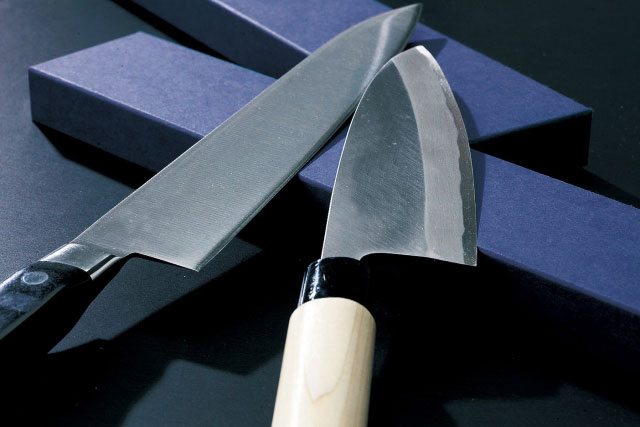As we’ve been showcasing, Japanese kitchens are equipped with simple, elegant tools that serve multiple purposes and are made to withstand constant use. Japanese knives are key to the culinary tradition, with the deba bocho being an important piece of the cook’s knife collection.
The deba bocho is one of the five basic knives that are part of most traditional Japanese kitchens. Along with funayuki bocho, nakiri bocho, wabocho or santoku, and the sashimi bocho, the deba bocho, which means “pointed carving knife” has a unique shape and heft that has evolved over time to become task–specific and task-expert.
The deba bocho, also called a sakana bocho, is a thick-bladed, heavy knife with a sharp tip. The length of it can vary, but in general, the deba bocho is a medium to large (23-31 cm, or about 9-12 inches) knife that is used to hand-fillet fish, carve whole poultry and cut through larger chunks of meat, especially when the cook needs to cut through small bones.
The various parts of the blade are extremely useful for specific cuts. When filleting a fish, the broad, long edge of the blade is used to cut through the flesh along the edges of bones. The tip is used to sever fillets from the carcass and the corner edge is used to cut through larger pieces. The knife can also be used similar to a Western carving knife, useful for carving a chicken along the joint lines and along the breasts. The knife, especially if maintained correctly and sharpened regularly, makes precise cuts and will last the cook for many, many years.
Have you used this type of knife before? Share your stories!

Leave a Reply